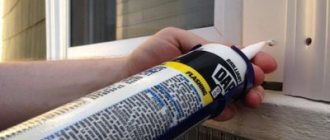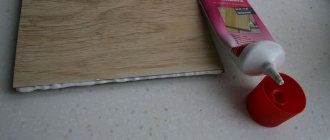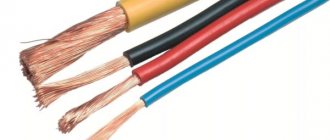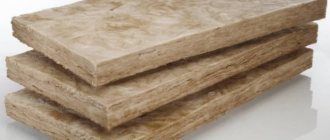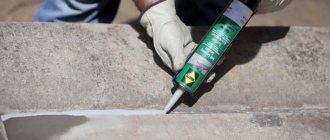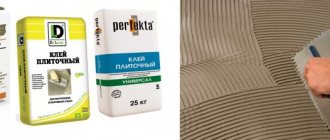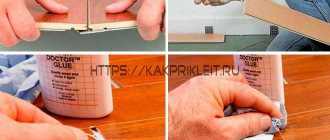When renovating a bathroom, it is almost impossible to do without the use of a sealing compound. Using sanitary silicone sealant, gaps between sinks and showers are sealed, spaces between pipes are sealed, and structural spaces are sealed. The scope of application is varied, so it is worth understanding which composition is better and what is their difference.
Features of the sealant
Sealants differ in composition, scope of application, and release form. Several options are presented:
- in tubes with a cap and a cone-shaped spout, the volume usually varies between 60-100 g;
- tubes that work in conjunction with a construction gun, they are more voluminous - about 500 ml, easy to use, as they make an even line that does not require wiping or touch-ups;
- aluminum tubes that look like a sausage are usually used in large-scale construction, as they are produced in large volumes.
For bathroom renovations, it is better to use tubes with a gun. This is an ideal option for doing the work yourself.
When choosing the ideal polymer, regardless of composition, you need to pay attention to three parameters; it should be:
- waterproof;
- safe;
- durable.
Strength is increased by plasticizers, but they significantly increase the cost of the material. Often, unscrupulous manufacturers replace them with various additives, which worsens the technical characteristics of the sealant for the bathroom and plumbing; moisture-resistant compounds begin to leak water and crack. That’s why it’s worth carefully studying the composition; impurities should be no more than 10% of the total mass.
It is also important to select a polymer for the bathroom with antifungal impregnation in order to avoid troubles in the form of fungus and mold on tiles, walls, and around plumbing fixtures during operation.
Which sealant is better to buy for the bathroom?
When choosing a sanitary sealant, it is important to pay attention to its composition. It must withstand high levels of humidity and frequent temperature changes.
It should also contain antiseptic additives that will prevent fungi and mold from forming in the seams.
Sealants are:
- transparent,
- white,
- colored.
It is better to immediately choose the right color, since not all compositions can be painted.
Consistency is especially important when working with vertical surfaces - it should not be too liquid and leak out of the seams. It is better to stick to thick gel-like formulations.
Each type of sealant is designed for different materials. Before purchasing, you need to check the adhesion of the formula with the characteristics of the surface on which the product will be applied.
Recommendations: 12 best adhesives for vinyl wallpaper
13 Best Glue Guns
15 Best Tile Adhesives
Silicone
Most often, when performing renovation work in the bathroom, preference is given to silicone sealing compounds. These can be acidic and neutral mixtures.
The former have easier production, which makes them available at a price affordable for most people. One of the obvious disadvantages is the difficulty of working indoors, and the bathroom is one of them.
Another disadvantage is the ability to oxidize upon contact with a metal surface. Actually, when repairing or sealing plumbing fixtures made of steel and cast iron, it is better to select neutral mixtures. Such characteristics significantly increase the cost.
The advantages stand out:
- resistant to humidity;
- do not suffer from the aggressive effects of ultraviolet rays, do not crack or fade;
- tolerate temperature amplitudes well, even high ones, but their range should be from -50 to +200 degrees;
- long service life without loss of technical characteristics; properly applied material can last forty years with proper care.
The products are presented in two types: one- and two-component. The first ones are used more often, since they do not require preliminary preparation. The latter require mixing, which increases the repair time.
Properties and scope
Silicone-based sealants have the following properties and areas of application:
- provide excellent adhesive ability, so with their help you can seal the joints of window sills, both plastic and stone, install sinks and countertops;
- They seal well the joints of glass and materials with a non-porous structure, and reliably glue drainpipes;
- have heat-resistant characteristics, which allows them to be used in the repair of bathhouse chimneys;
- High moisture-resistant characteristics ensure reliable sealing of the junction of the sink, bathtub, and shower.
Experts note that even after complete hardening, the seam does not lose its elasticity and does not cause cracks. But a significant disadvantage is the absence of antifungal components in some formulations, which is important when choosing a bath product. This is why it is worth carefully studying the composition.
Manufacturers
Almost all manufacturers of sealing compounds offer their own line of silicone sealants.
The rating of the best, reliable brands includes:
- Bison, refers to acidic compounds of white or transparent color. It is allowed to use moving joints and seams, including sewer type ones, as a sealant. Suitable for sealing in sanitary installations. It is characterized by high levels of moisture resistance, elasticity, resistance to chemicals and ultraviolet radiation.
- BAU MASTER UNIVERSAL is a universal sealing agent. It has water-resistant properties and immunity to acidic environments. Using the composition, seams and cracks in window frames and doorways are easily sealed. Suitable for renovation work in bathrooms and toilets. There is only one drawback - the sealant is not suitable for painting.
- Macroflex AX104 is a universal silicone-based sealant. After hardening, an elastic seam is formed and is highly resistant to chemicals and various atmospheric influences. Good adhesive properties and low shrinkage make the composition very popular when renovating a bathroom.
Silicone-based sealants are perhaps the most popular on the construction market. They meet all the necessary requirements and are ideal for carrying out repair work in rooms with high humidity.
The compositions have a wide range in prices, so you have the opportunity to choose the one that suits you. Sealing compounds from German manufacturers are of excellent quality; these are high-quality products with high technical characteristics, however, the price of most is just as high.
Forms of release of silicone plumbing sealant
The most commonly used are so-called silicone sealants. The thick plastic waterproof mass is also called liquid silicone rubber.
Manufacturers and hardware stores offer to purchase it in the following forms:
- Cartridges (300 - 315 ml), for which you need to buy a special construction gun. Only with its help can the contents be squeezed out of the cartridge evenly, which is necessary for a beautiful, even seam;
- Tubes (85 ml each);
- Sprays (200 ml each). No additional tools are needed to use the spray.
Acrylic
They are considered the most affordable sealing material with good technical parameters.
The main advantages stand out:
- contains no hazardous or toxic substances;
- allowed to be used at temperatures from –20 to +80 degrees;
- high adhesion to brick, concrete, glass, metal and wooden surfaces;
- can withstand prolonged vibration;
- dries quickly;
- Can be painted after use.
With the help of acrylic sealants, repair work is carried out quickly and easily. But it is worth considering that the material shrinks during drying, which often provokes leakage at the seam. It is best to use it in places away from water.
Properties and scope
Acrylic-based sealants have the disadvantage that the seams are hard. This causes cracks to appear when they expand, even slightly. In this regard, it should not be used at joints when installing a bathtub.
It will be more effective if you need to fill voids or eliminate cracks. It is also often chosen when it is necessary to connect low-moving parts.
Manufacturers
The market offers a wide range of acrylic compositions from different manufacturers. But it is important to carefully study the properties; the sealant must have moisture-resistant characteristics.
The best brands, according to experts, are:
- KIM TEC Silacryl 121. Moisture-resistant sealant with excellent elastic properties, withstands even prolonged contact with water.
- Dap Alex Plus. A decent sealant based on acrylic-latex, making it elastic and durable. The composition contains additives that block the appearance of fungus and mold.
- The mixtures are available in several types, there is a super fast one, which hardens within half an hour, and a universal one, which allows you to seal even wooden surfaces.
It is worth noting that acrylic compounds are much cheaper than their silicone competitor.
Acrylic based sealants
VGP acrylic white, 310 ml
This domestically produced sealant is intended not only for the bathroom or toilet, but also for the entire apartment. It is used, as a rule, to make a sealed layer in particularly important seams, the width of which does not exceed 2 mm, and they should not be subject to deformation during operation. The composition is able to withstand conditions of high humidity and tolerates significant temperature changes, including very sharp ones, so it is often used not only indoors, but also outside.
More: Top 10 best jackhammers, which jackhammer to choose?
It will be very useful when installing sinks, toilets, bathtubs and showers. With its help, it is possible to reliably fill seams in a wide variety of materials - PVC, metal, glass, ceramics. It has a whole set of strengthening additives that allow it to additionally acquire antibacterial qualities that prevent the formation of mold and fungi.
Advantages:
- Excellent seam water resistance;
- The strength of the material after drying is very high;
- Acceptable price;
- Antifungal characteristics are present;
- If necessary, the sealant layer can be painted with water-based paint.
Flaws:
- It takes quite a long time to dry - complete drying can take up to 12 days depending on conditions.
VGP acrylic white, 310 ml
Moment Germent
The formula of such a sealant was originally developed by German chemists and engineers, then it was sold to the famous Russian one, in whose factories these products are produced today. According to users, the composition is the best option for the widest seams, but it is also quite suitable for a number of other problem areas that are one way or another observed in the sanitary areas of the apartment. Experts say that the sealant adheres well to any materials, penetrates well not only into large but also into small seams, fills them completely, and the layer after drying retains a certain elasticity, which is not very typical for acrylic-based sealants.
Experienced plumbers again say that the consistency of the sealant becomes much thicker when the expiration date comes to an end. However, the product resists moisture well, perfectly protects against water, and has a long service life. The composition easily tolerates low temperatures without drying out or falling out of the seams, so the sealant can also be used for outdoor work.
Advantages:
- Optimal for fairly wide seams;
- Withstands low temperatures well;
- Maintains elasticity after drying;
- Can be painted with any composition;
- Adheses to materials regardless of their nature.
Flaws:
- It gets thicker as it expires.
Moment Germent
Ceresit CS 7
Another product that, after drying, retains increased elasticity, largely due to the plasticizers added to the formula. This sealant is not too expensive, due to which it is widely popular among home craftsmen who want to save on repairs, since it always takes a lot of money. Similar products are used to seal seams when laying ceramic tiles or during the installation of any kind of plumbing fixtures.
The insulation is durable and of high quality. After complete drying, you can paint it any color, which is what craftsmen really like. The product easily withstands prolonged exposure to water vapor, does not dry out or get wet, and copes well with high and low temperatures, which is why it is used for outdoor work, as well as for finishing baths and saunas. The sealant is produced by a well-known Turkish brand.
Advantages:
- The products of this manufacturer are widely distributed in Russian construction and finishing stores;
- After drying, an elastic seam is formed, providing high-quality insulation;
- Resistant to moisture and temperature changes;
- If necessary, you can paint it any color.
Flaws:
- It is not recommended to apply an excessively thick layer, as it may crack.
Ceresit CS 7
Sealants with MS polymers
It’s a new product, but it has already won the trust of consumers. They combine the quality of silicone and polyurethane compounds. The material reliably protects against various types of leaks and forms a strong and elastic connection.
Properties and scope
Despite the fact that ms polymer products have appeared on the market relatively recently, they have already gained popularity and demand. This happened due to their high adhesive properties, which is why polymers simultaneously began to be called adhesive-sealants.
High characteristics made them almost universal; among the advantages, the following stand out:
- high adhesive parameters to any materials without additional priming of surfaces;
- the composition does not contain solvents, so there is no odor and no harmful compounds are released;
- do not harden when dried, do not lose their elasticity;
- excellent water resistance, so it can be used even in water;
- resistant to the sun, so they do not create cracks or lose color.
Among the large number of advantages, there are also disadvantages, but there are not many of them. The main disadvantage for many is the cost; MS polymers are an order of magnitude higher than their analogues. It is also worth adding that it is very difficult to remove the sealant after hardening; mechanical force will have to be applied to it.
Manufacturers
Many well-known manufacturers produce MS polymers. Among them, the following brands stand out:
- SOUDASEAL 240 FC is a hybrid sealant with excellent adhesive properties to a variety of materials. Due to the contained fungicides, resistance to moisture, fungi, and mold development increases. Another plus is almost instant polymerization.
- TECFIX MS 441 is the ideal sealant for wet areas. Among the advantages are resistance to fungi and mold, chlorine and other alkaline substances.
- BOSTIK SuperFix - these products can be used even with constant contact with water. That is why they can be used to eliminate leaks in an aquarium and seal cracks in aquariums. It has excellent elasticity and is not afraid of temperature changes.
Most products are available in paste form, which simplifies the work. The mixture does not spread, so it can be used on walls and ceilings. The composition applies smoothly and does not create bubbles.
Table of advantages and disadvantages of different types of bathtub sealants
| Types of sealants | Advantages | Flaws |
| Acrylic | + low price + moisture resistance and resistance to temperature changes + can be painted + excellent adhesion to different materials | - insulation is not elastic — hardens for a long time (24 hours) - not all products are suitable for the bath |
| Sanitary | + high resistance to biodestruction + wide scope of application + good adhesion + minimal shrinkage | - pungent odor lasts for a long time - high price |
| Silicone | + affordable price + resistance to water, temperature changes, ultraviolet rays + wide range of colors + also suitable for outdoor use | - cannot be painted — insufficient adhesion to polymeric materials. |
| Polyurethane | + fast hardening + can be used as an adhesive + elastic and durable insulation + can be coated with paint or varnish | - high price - poses a danger to the health of the finisher during work |
Polyurethane
This material is often purchased for external sealing. Polyurethane compounds are not afraid of temperature changes, high humidity and exposure to ultraviolet radiation.
The products also work well in damp areas, such as bathrooms. Due to their moisture-resistant properties, the mixtures can be used to eliminate leaks in the heating system. But it is important to remember that they have poor adhesion to plastic, so they are not suitable for plastic pipes.
Properties and scope
Polyurethane compounds are intended for both internal and external repair work. Mixtures are allowed to work at sub-zero temperatures, but it is important that the indicator does not fall below -10 degrees.
Plumbing sealants based on polyurethane have the following advantages:
- do not lose their elastic properties even after complete drying;
- have high water-resistant characteristics, therefore they are allowed for use in bathrooms, baths, swimming pools;
- do not shrink after hardening, do not deform, and do not cause cracks in the seams;
- shows good adhesive parameters with brick, concrete, metal, glass surfaces.
Due to the white and transparent base they can be painted. The polymer also has a number of disadvantages, the first is the inability to process wet surfaces; they must first be dried or primed. The second disadvantage is that it is undesirable to use on plastic; low adhesion reduces the strength of the seams.
Manufacturers
Moisture-resistant sealing compounds are available in a wide range. According to experts, the following building materials are recognized as the best manufacturers:
- Somafix, suitable for sealing seams and cracks in rooms with high humidity. It has good water resistance, adhesion, and waterproofing. It is distinguished by strength, elasticity and durability.
- MAKROFLEX - the composition shows good resistance to moisture and weakly acidic solutions. Available in convenient pistol-mounted tubes of 300 ml. A clear advantage is the low cost.
- POLYURETHANE 50 FC is a fast-drying, moisture-resistant sealant. Can be applied to most materials, including plastic, corrosion-resistant steel. Surface setting takes 25 minutes.
Such sealing compounds belong to general construction materials. Although they showed their worth in bathroom renovations.
Best lists
In addition to the previously mentioned sealants, the following compounds deserve special attention:
- Budget - CIKI FIX UNIVERSAL.
- Silicone – KRASS SILICONE UNIVERSAL.
- Acrylic – VGP ACRYLIC WHITE.
- Polyurethane – RABBERFLEX PRO PU 25.
Let's consider why they deserve high marks from experts.
Budget – CIKI FIX UNIVERSAL
One of the most budget options is CIKI FIX UNIVERSAL from a Turkish manufacturer. Even during frequent use of the shower or bath, the composition remains elastic and does not crack or wash out. The strength of the substance is its resistance to temperature changes, the weakness is the lack of antifungal elements in the composition, so the bathroom will need to be regularly ventilated.
| Volume (ml) | 280 |
| Tone | white |
| A country | Türkiye |
| View | universal |
Price: from 95 to 120 rub.
bathtub sealant CIKI FIX UNIVERSAL
Silicone – KRASS SILICONE UNIVERSAL
The main feature of the following silicone sealant is the absence of shrinkage after the material dries. This substance adheres perfectly to any surface, without running off during application and completely filling the necessary voids. In addition, the material is protected from ultraviolet radiation - it will not darken even after many years, maintaining its original white color.
| Volume (ml) | 300 |
| Tone | white |
| A country | Poland |
| View | silicone |
Price: from 250 to 300 rub.
bathtub sealant KRASS SILICONE UNIVERSAL
Acrylic – VGP ACRYLIC WHITE
This sealant is used when sealing seams up to 2 millimeters wide. It withstands wet conditions and temperature changes well, and provides a strong connection with the most commonly used materials - PVC, ceramics, glass, and metal. Another clear advantage of the substance is the antibacterial substances included in the composition: they perfectly prevent the appearance of mold and mildew in wet areas.
| Volume (ml) | 310 |
| Color | white |
| A country | Russia |
| View | acrylic. |
Price: from 129 to 131 rubles.
bathtub sealant VGP ACRYLIC WHITE
Polyurethane – RABBERFLEX PRO PU 25
Not a very well-known brand on the Russian market, which is a pity. After all, the material is more than worthy of attention due to its excellent characteristics. The strengths of this product are considered to be increased elasticity of the seam, high-quality insulation, resistance to negative influences, and the possibility of painting. Actually, the sealant is no different in parameters from more expensive known compounds.
| Volume (ml) | 600 |
| Color | white |
| A country | Italy |
| View | polyureth. |
Price: from 330 to 360 rub.
bathtub sealant RABBERFLEX PRO PU 25
Selection rules
There are some useful tips for choosing the ideal sealant:
- if you have to seal the joints of a metal, acrylic bathtub, shower stall, then you should pay attention to MS polymers;
- The ideal solution for fixing mirrors would be polyurethane compounds or those containing silicone;
- The same polyurethane mixtures will help deal with fallen tiles; they quickly glue the element, do not shrink when drying, and therefore will not damage the tile;
- Silicone ones will help seal the leak and restore the threaded connection;
- To seal or install communications, you should pay attention to silicone-based compounds; they are the most suitable for such purposes.
- If polymers are used to seal joints, then it is worth selecting products that have antifungal properties.
It is best to give preference to sealants that have a viscous or paste-like consistency. Thanks to this structure, the product will be able to penetrate and fill even microcracks and crevices.
Each polymer is selected taking into account a specific task, only in this way can the maximum effect be achieved. In this case, the repair will last a long time, there will be no need to dismantle it, which means you will be able to avoid unnecessary expenses on materials.
Substrate requirements before applying sealant
Before applying the sealant, it is recommended to clean the base from dirt, remove dust, and dry it. Snow and ice, if any, are also removed. It is recommended to strengthen fragile surfaces with a primer.
The temperature at which sealant can be applied varies for different types of sealant.
Cemmix polyurethane sealants can be applied at subzero temperatures, as well as during light snow, rain, and fog.
It is necessary to exclude the appearance of a third contact surface of the sealant. To do this, a cord of a suitable diameter made of closed-cell polyethylene foam is installed at the mouth of the seam. It is important to apply polyurethane sealants so that the width of the seam is half its depth; this is necessary for high-quality polymerization.
Usually the sutures are not loaded on the first day. When polymerization ends, they become resistant to mechanical stress.
A sealant for external use, among other characteristics, must demonstrate water resistance and frost resistance during application and operation. The best option is Cemmix polyurethane sealants - reliable, durable, waterproof and frost-resistant. You can buy them wholesale, retail, and online.
You can buy CEMMIX products without leaving your home, with discounts from 5 to 33%!!!!
Buy on Ozon
Buy on Yandex.Market
Buy on Wildberries
Buy at Leroy Merlin
What does it contain?
The production of silicone sanitary sealant is based on silicon (it is from it that silicone polymer material is obtained). Sealing compounds made from silicone also include various additives:
- Manufacturers must add a fungicide to the product. It is necessary to provide a bactericidal effect and prevent the occurrence of mold lesions.
- To reduce the viscosity of the mixture, organic extenders are used.
- Mechanical fillers (manufacturers usually use glass or quartz dust, chalk and other suitable components) can improve the quality of the connection with different surfaces.
Important! To obtain a sealing mixture of a certain shade, dyes (colors) are used. They are added immediately at the factory, because silicone sanitary sealants, taking into account the instructions for use, as well as the specifics of use and operation, cannot be painted after application.
Do-it-yourself sealing of connections
Silicone sanitary sealant is a composition that can be applied independently, even without installation and construction skills. All work on applying the sealing mixture is carried out in stages. Let's talk about each stage separately.
Stage No. 1. Preparation of the treated surface
Before starting, it is necessary to carry out work to prepare the surface that is planned to be treated with silicone sealant. It is necessary to remove any remnants of old mastic or grout, dirt, dust, oil stains, etc. from it. In any case, it is recommended to use degreasing compounds.
Attention! If you plan to use a sealing mixture to seal the gaps between the tile products and the metal bathtub, then before starting work you need to fill it with water. The edges of metal baths will always deform slightly under load, so it is advisable that the treatment occurs while the bath is in working position under load.
Stage No. 2. Sealing
Silicone moisture-resistant sealant is sold in special tubes, which may have a plastic tube for applying the composition. To make the work easier, you can use a mounting gun, with which you can apply sealing mixtures faster and more accurately, ensuring the required dosage.
If there is a gun, then the work is carried out in the following sequence:
- First, you need to remove the cap from the tip of the tube with silicone sealant.
- Then you need to cut off the end of the nozzle at an angle of 45°.
- Next, you need to install the tube with the mixture in the gun and begin processing.
- The trigger mechanism of the pistol must be pressed gently and lightly.
- Processing joints and gaps must begin from the corner. Silicone sealant must be applied in a continuous long line.
Stage No. 3. Creating a seam
At the third stage it is necessary to make seams. When carrying out ordinary household work, this is done simply with your finger. But you must first put on protective gloves. You need to smooth out the applied composition carefully, removing all excess and adding the mixture to those places where it is missing.
Important! Professional craftsmen do not smooth over anything with their fingers. They use a spatula to create the seam. To obtain a neat and beautiful seam, it is recommended to pre-wet the spatula with soapy water.
On video: Technology of using silicone sealant.
Stage No. 4. Finishing
At the last stage, you need to remove all the resulting excess with a napkin. You must understand that clear or white silicone sanitary sealant has a very short drying time, so upon completion of work you should quickly wash your hands and clean the tools and equipment used.
Important! If the silicone sealant has already hardened, you can try to remove it mechanically using a spatula or other suitable available tools. If this cannot be done mechanically, we recommend using solvents.
There is a high probability that after a few days some defects (holes, cracks and other defects) will be revealed. They can be closed with the same compound that was used to seal gaps and joints.
How to properly apply sealant in the bathroom: step-by-step instructions
In order not to redo the work, you need to study in advance the manufacturer’s data on drying time, conditions and procedure for applying the composition, and also prepare everything necessary for sealing the bathroom.
Tools and Supplies
If you purchased the sealant in a tube, you can squeeze it out by hand or apply it using an applicator. Products sold in cartridges are applied only using a special gun, which must be purchased additionally. It is the gun that allows you to create the most beautiful, even lines of sealant, regardless of the length.
Before work you also need to prepare:
- soap solution (you can dilute regular soap or dishwashing liquid);
- rags or soft sponges;
- small spatula for sealant;
- solvent (alcohol, acetone);
- masking tape.
Instead of a spatula, which is used to level the sealant in wide joints, you can use a special attachment for the gun. It’s more convenient to work with: you can immediately apply and straighten the seam. The price of such a device is quite low; it is sold in any hardware stores.
Special nozzle for creating an even seam
Surface preparation
The base is carefully prepared before applying new sealant. Remove the old product, thoroughly clean the surfaces even from small dried pieces. Wash the wall and plumbing with soap, rinse off the solution well, dry and wipe with a degreasing compound. After final drying, apply masking tape so as to limit the application of sealant and not stain the surfaces. It is important that the tape lies flat, without creases or bends, otherwise there will be defects on the seam after removal.
It is necessary to remove the tape before the sealant sets: if the seam has already begun to harden, the masking tape will make small tears into which water will enter. It is not necessary to tape the edges of thin, narrow seams. If the gap is too deep, you can fill it with paper or a sponge, leaving about 5 mm of space, which will then be filled with sealant, and after it has dried, remove the filling.
Forming an even seam using tape
Preparation of the product
To apply sealant, you need to do the following:
- cut off the tip from the tube, screw on the spout, cut it at an angle of 45 degrees (the diameter of the cut should be approximately equal to the size of the slit or be 1-2 mm larger);
- insert the tube into the gun, secure;
- perform a couple of presses with the handle so that the product comes out of the spout, remove excess;
- in the absence of experience, it is advisable to draw several lines on the rough surface for the purpose of training.
Final processing
To apply the sealant, place the nozzle tightly against the gap between the bathtub and the wall, slowly press the handle while moving the cartridge along the surface. The result should be an even sealing seam.
Squeeze out the product without stopping so that the strip is continuous. Then proceed like this:
- trim the surface of the sealant: if the seam width is up to 5 mm, you can do this with your finger; for larger widths, you need to use a rubber or metal spatula;
- excess sealant is removed with the sharp tip of a metal tool;
- check the seam again, align the recesses and protrusions;
- remove the masking tape if it was applied.
When the sealant has a rather liquid texture, it is worth attaching a narrow strip of foam under the bathtub in advance - this will prevent the composition from flowing down. Too large seams should be sealed with a curb, and sealant should be used to fix it.
Silicone compound can also be used to secure individual loose tiles to the floor or walls. The product is applied to the tile in stripes along the perimeter and diagonally, and pressed to the base. After final drying, the product will hold the tiles no worse than cement.
How long does it take for sealant to dry in a bathroom?
Acid compositions do not dry for long - 4-6 hours. Neutral sealants dry in 10-12 hours, but some require longer drying - up to 24 hours. When making a thick seam or at low room temperatures, the specified time may extend to 2 days.
Do not pour water into the bath until the sealant has completely polymerized. If you want to speed up the drying time, you can do the following:
- increase the temperature to +40 degrees;
- ensure good ventilation of the room (open the doors, turn on the hood, fan);
- Spray the finished seams with water from a spray bottle.
How to remove sealant from a bathtub
To get rid of old sealant, the mechanical method is most often used. Using a sharp knife, pry the seam where it touches the bathtub or wall, then tear it off in a strip. Small pieces are scraped off with a knife blade or pumice. If you cannot completely clean the base, you should use a chemical method.
The surface must be moistened with acetone or another solvent, and 5 minutes after softening, the composition must be removed with a rag. You can also use special washes for this work:
- "Penta 840";
- Lugato;
- Gasket Remover;
- Antisil 770;
- Dow Corning OS-2.
How to replace sealant in a bathroom
It happens that cracks appear in the old sealing seam, it darkens and becomes ugly. Then you can replace it by first removing the damaged sealant using any of the methods described above. Be sure to check the junction of the bathtub and the wall: there is often mold there, which must be removed with a liquid antiseptic. Next, the sealant is applied using standard technology.
Application and performance characteristics
Most often, this sealant is used when installing plumbing: it helps to seal joints into which water can get, causing mold to settle there. The product is perfect for sealing seams between the wall and the bathtub, shower stall, sink, toilet, and countertop. High-quality sealants are used when laying or replacing elements of water supply and sewerage systems. When assembling pipes, they will prevent leakage and increase the service life of the unit.
Since most sanitary sealants have antiseptic properties, they are suitable for installing window systems inside and outside buildings, helping to prevent mildew and mold. Also, any of the sealants can be used for other purposes:
- roofing works;
- strengthening greenhouses;
- sealing joints in masonry;
- installation of vinyl cladding;
- mirror mountings.
A good sealant has the following qualities:
- high level of elasticity, the possibility of application to deformable bases, moving elements and parts of structures;
- resistance to water, steam, condensate, chemicals and UV radiation;
- excellent adhesion to ceramics, concrete, tiles, stone, glass;
- tolerance to temperature changes;
- versatility and low consumption.
What problems does plumbing sealant solve?
Experienced plumbers recommend taking the issue of sealing a bathroom as seriously as possible. The risk of leakage always remains, and only the use of special compounds helps reduce this danger. If there are holes between the wall and the bathtub, mold will likely appear in the room, and a leak in the water supply system can even lead to serious troubles. The most problematic areas are those where inserting fittings or creating branch pipes is required: there the use of sealant is especially necessary.
Using plumbing sealant when connecting water pipes
Sealant for water pipes and plumbing solves the following problems:
- preventing the occurrence of leaks caused by the presence of cracks, cracks or too much water pressure;
- protection against temperature changes arising from the regular supply of hot water;
- maintaining important parts and assemblies intact, extending their service life;
- enhancing the effect of using gaskets.
Composition of sealants
Silicone sealant is produced on the basis of silicon compounds and various polymers, as well as additives:
- fungicides and antiseptics to provide antifungal properties;
- organic extenders to reduce viscosity and better flow into small cracks and holes;
- fillers (quartz and glass dust) to enhance adhesion;
- pigments to give a certain shade.
Sealants with other compositions may include acrylic, polyurethane, organic solvents and other components that provide the product with reliable adhesion and sealing ability.
Release forms
Many sealants are sold in plastic cartridges for a gun with a volume of 290–360 ml. Also on sale are products in tubes of 50–100 ml - regular or equipped with a special piston like a syringe. For large-scale plumbing work, it makes sense to purchase soft packages of sealant of 600 ml or more, for squeezing out which special guns are used.
Kinds
First of all, silicone sealants are usually divided into one-component and two-component. The first are a ready-to-use product. The latter consist of two components - a base and a catalyst. To obtain a usable sealant, these components must be mixed in a certain proportion.
There is also a classification by composition. According to it, silicones can be divided into neutral and acidic.
The first types include materials made on the basis of alcohols, oximes, amines and amides. During the drying process, this type of sealant releases alcohol into the environment. Such compositions can be used on any surface.
Acetoxy sealants contain acetic acid, which is released during the polymerization process. Because of this, the scope of such materials is somewhat limited: they are not recommended for use on non-ferrous metals, steel, concrete, marble and alkaline substrates.

